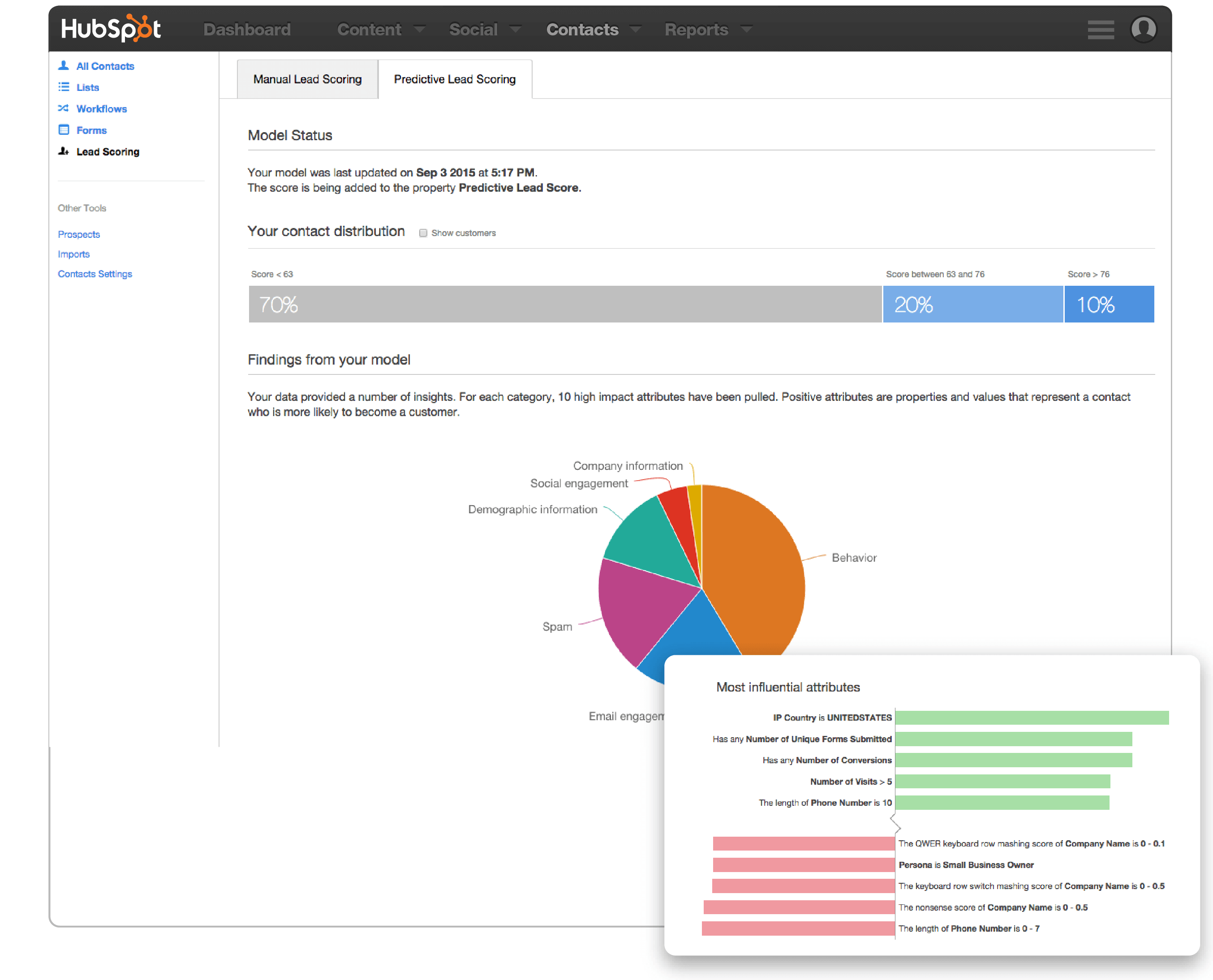
HubSpot Predictive Lead Scoring: Complete Buyer's Guide
Native CRM-integrated AI-powered lead qualification
HubSpot Predictive Lead Scoring represents a native CRM-integrated approach to AI-powered lead qualification, positioning itself as an enterprise-grade alternative to both specialized AI vendors and third-party platform solutions. The system leverages proprietary machine learning algorithms to analyze CRM data and behavioral signals, calculating a "Likelihood to Close" score from 0-100 that predicts conversion probability within 90-day windows[36][42].
Market Position & Maturity
Market Standing
HubSpot competes within the enterprise CRM-integrated AI scoring segment alongside Salesforce Einstein and Oracle Eloqua, while facing competition from specialized AI vendors like MadKudu and SuperAGI[42][52].
Company Maturity
The platform targets the Marketing Hub Enterprise segment at $3,600 monthly[65], reflecting HubSpot's enterprise positioning within the broader martech ecosystem.
Proof of Capabilities
Customer Evidence
Limited customer evidence suggests some Enterprise implementations achieve improved lead conversion rates post-deployment, though outcomes vary significantly based on underlying data quality[42][86].
Quantified Outcomes
B2B implementations have documented sales cycle reductions when integrating scoring with automated workflows[42][58].
AI Technology
HubSpot Predictive Lead Scoring employs proprietary machine learning algorithms to process CRM-stored behavioral and demographic data, generating predictive scores that identify conversion likelihood within 90-day windows[36][42].
Architecture
The platform's technical architecture supports enterprise-scale operations with 20K scoring requests per second processing capacity in online inference pipelines[87].
Primary Competitors
HubSpot competes within the enterprise CRM-integrated AI scoring segment alongside Salesforce Einstein and Oracle Eloqua, while facing competition from specialized AI vendors like MadKudu and SuperAGI[42][52].
Competitive Advantages
HubSpot's native CRM integration provides genuine differentiation from specialized AI vendors, eliminating API synchronization issues that affect 35% of third-party implementations[14][17][63].
Market Positioning
HubSpot positions as an integrated platform solution rather than a specialized AI tool, targeting organizations seeking ecosystem coherence over best-of-breed functionality.
Win/Loss Scenarios
Choose HubSpot when existing HubSpot CRM investment justifies integrated approach and eliminates third-party integration complexity[59][88]. Consider alternatives when budget constraints limit Marketing Hub Enterprise adoption, when specialized B2B intent scoring accuracy takes priority, or when regulatory requirements demand full model transparency[59][65][89].
Key Features

Pros & Cons
Use Cases
Pricing
Featured In Articles
Comprehensive analysis of AI Lead Scoring for AI Marketing & Advertising for AI Marketing & Advertising professionals. Expert evaluation of features, pricing, and implementation.
How We Researched This Guide
About This Guide: This comprehensive analysis is based on extensive competitive intelligence and real-world implementation data from leading AI vendors. StayModern updates this guide quarterly to reflect market developments and vendor performance changes.
120+ verified sources per analysis including official documentation, customer reviews, analyst reports, and industry publications.
- • Vendor documentation & whitepapers
- • Customer testimonials & case studies
- • Third-party analyst assessments
- • Industry benchmarking reports
Standardized assessment framework across 8 key dimensions for objective comparison.
- • Technology capabilities & architecture
- • Market position & customer evidence
- • Implementation experience & support
- • Pricing value & competitive position
Research is refreshed every 90 days to capture market changes and new vendor capabilities.
- • New product releases & features
- • Market positioning changes
- • Customer feedback integration
- • Competitive landscape shifts
Every claim is source-linked with direct citations to original materials for verification.
- • Clickable citation links
- • Original source attribution
- • Date stamps for currency
- • Quality score validation
Analysis follows systematic research protocols with consistent evaluation frameworks.
- • Standardized assessment criteria
- • Multi-source verification process
- • Consistent evaluation methodology
- • Quality assurance protocols
Buyer-focused analysis with transparent methodology and factual accuracy commitment.
- • Objective comparative analysis
- • Transparent research methodology
- • Factual accuracy commitment
- • Continuous quality improvement
Quality Commitment: If you find any inaccuracies in our analysis on this page, please contact us at research@staymodern.ai. We're committed to maintaining the highest standards of research integrity and will investigate and correct any issues promptly.